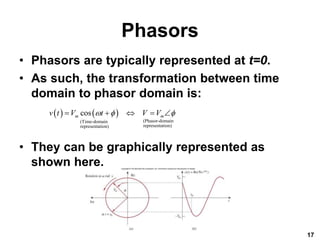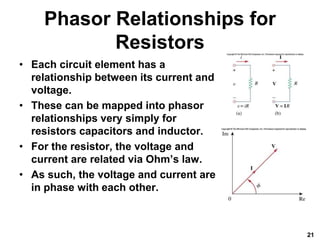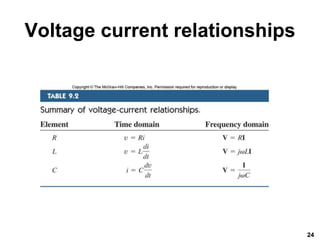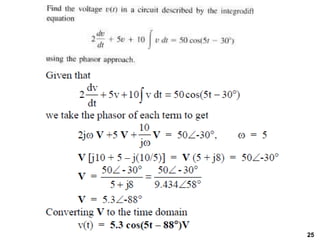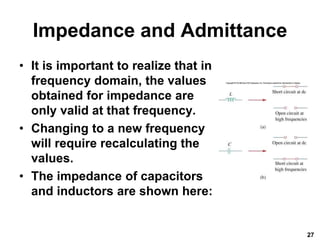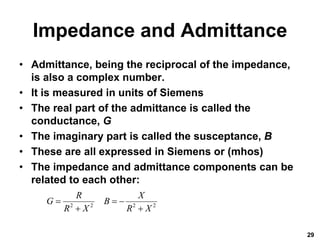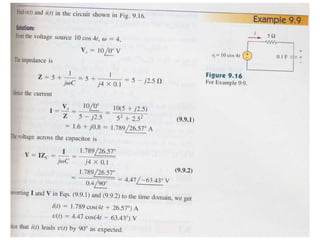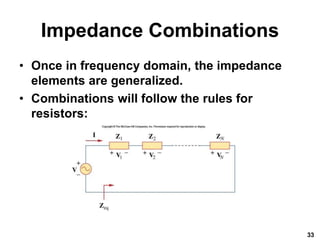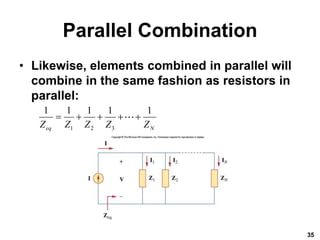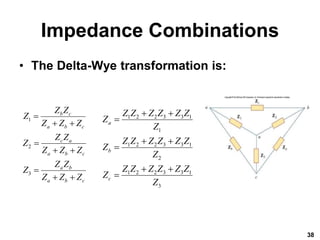This document provides an overview of sinusoidal steady-state analysis of circuits containing resistors, capacitors, and inductors. It introduces alternating current and defines sinusoids. Phasors are presented as a way to represent sinusoids in frequency domain by using complex numbers. Circuit element relationships are mapped to the phasor domain, including impedance and admittance. Kirchhoff's laws are shown to apply to phasor analysis. Methods for combining impedance elements in series and parallel are described.
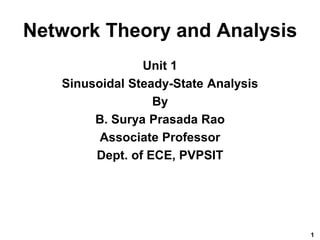



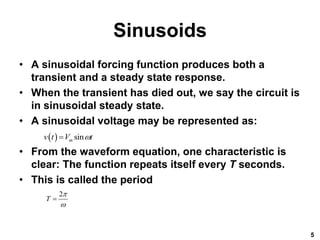
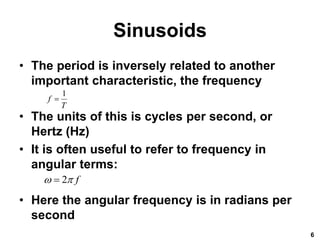

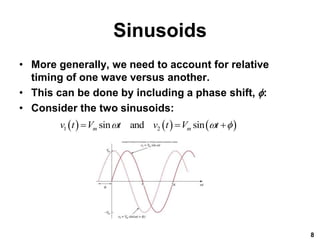


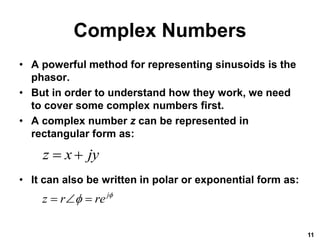

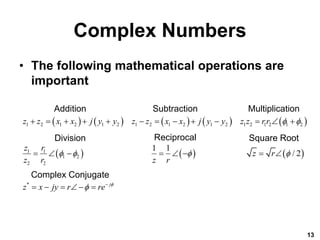
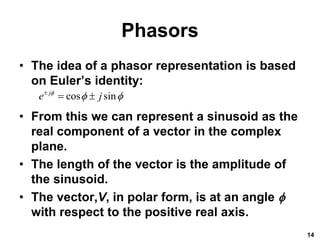

![16
Example 3
• Evaluate the following complex numbers:
a.
b.
Solution:
a. –15.5 + j13.67
b. 8.293 + j2.2
]
60
5
j4)
1
j2)(
[(5 o
o
o
30
10
j4
3
40
3
j5
10
](https://image.slidesharecdn.com/unit1-220818033348-24dfb667/85/Sinusoidal-Steady-State-Analysis-16-320.jpg)
